Crystals and history and modern times
History records the use of crystals as both functional and ornamental. The Gods of ancient myth wore them in their breastplates. Priests of many societies and brotherhoods, as keepers and preservers of lost prehistoric wisdom, often wore bejeweled amulets and plates, which acted as "oracles" and "voicepieces" from which advice was obtained. The Urim and Thummim stones of the Hebrew high priests were a prime example. The Atlanteans used crystals for healing, communication, weather control, record keepers, among other things. Tibetans used them to produce light. Mayans, among others, used crystals in their statues.
John L. Stephens in his classic work on the Mayan civilization, Incidents of Travel in Central America, Chiapas and Yucatan, tells how in one small Mayan temple he discovered 'a pedestal formed of a shining substance resembling glass' around which he was told the ancient priests gathered and consulted pictures created in the 'black, transparent stone.' He wrote, 'A native informed me that their ancestors had known the gift of the vision stone, when his people were instructed in the arts of civilization.'
In Peru, Spanish chroniclers recorded that when they invaded the Incan Empire and captured the King. The Queen and priests immediately fled to the Temple of the Sun in Cuzco, where they communicated with other regents of the land, and decided what was to be done by gazing into the 'black mirror', situated at the Temple's center. Significantly, the Incan Temple of the Sun, and the pyramid complexes of the Mayas, were all located on Earth energy lines. There is thus reason to believe that the Ancients possessed the ability of transmitting images along these lines, and crystal lenses or screens were used at specific centers to transform the images into pictures, much like a modern television set.
When we examine what modern research is uncovering regarding the full spectrum of the properties of crystals, and compare this with the Ancient knowledge, we discover we are touching upon only the very beginnings of a vast forgotten technology. Crystals, at their simplest functional level, can store light and discharge it, or convert sunlight directly into electricity. A step beyond, the crystalline form can also store information in vast quantities. A cut sliver of crystal can pick up a specified vibratory pattern; the silver can then be 'frozen' and subsequently 'unfrozen' later to playback the pattern. A complex sandwich of liquid crystal layers and mirrors act as light valves to create closed loops of light and moonlight signals, which correspond to a two alphabet system of information storage. By such means, information can be stored with a density of 2,500-fold over that of conventional electrical-digital computers. The first working model of the light and crystal computer is scheduled to be operational within a very short time. But one wonders if someone else, long ago, developed such a system before us. Could there be banks and libraries of knowledge stored in the crystals of standing stones, stone circles and other monuments around the world, just waiting, silently, for modern man to tap into them and learn the wisdom hidden within? Not only knowledge, but the actual consciousness and emotional energies of psychic individuals from past ages may still reside in many ancient crystal forms.
Several researchers have used crystals to capture the life force, or the vibratory pattern of a person at death. Other experiments being conducted are said to have successfully captured a human thought within a crystal and retransmitted it back as an image. Author George Hunt Williamson, who believes that crystals played a significant role in past civilizations, expressed his opinion that crystals can think, and many standing stones have an 'intelligence within them'. Masses of crystal flakes encased in a single stone may act as individual neurons passing along information from one flake to another and organize it, like a large crystal brain. Certain individual crystals, in particular diamonds and other precious stones, can hold conscious emotional energies from a bygone era, which may be triggered from time to time, affecting their owners. The best classic case of this is the famous Hope Diamond, and the mysterious curse attached to it. The Hope was originally part of a much larger gem called the Great Blue, later the French Blue, stolen from the temple of Rama site in India by Frenchman Jean Baptiste Tavernier in 1668. In revenge, the priests of the temple, along with the Mogul Emperor Aurangzeb, held a special rite and infused the gem with a negative consciousness or emotional pattern. Since that time, every owner of the gem, or even those who have handled it, have been subject to misfortune, tragedy or violent death. Even after the original Great Blue was cut into pieces, the Hope remaining as the largest, the curse has followed every piece, even to the present. Interestingly, tests have shown that the Hope Diamond and its sister stones are the only blue diamonds in the world which glow like red-hot coals when exposed to ultraviolet light, and can conduct an inordinate amount of electricity. Cursed gems are the exception to the rule, however, for in most respects, gems and crystals are generally looked upon favorably, having properties for good luck, for healing, and in aiding in psychic abilities.
The positive magical quality of crystals impressed themselves upon humankind far back in antiquity, for we find among Neanderthal remains, dating back to 70,000 B.C., collections of quartz stones and stone balls made of quartz crystals. Pieces of crystal have also been found in megalithic cairns, and at New Grange in southern Ireland, tiny pebbles of white granite quartz cover the entire mound above the energy-chamber. The Druids called certain colored crystal forms ovus anguinum or glein neidr - 'serpent eggs' - who believed were created by etheric serpents of energy beneath the earth and conjugated together at the time of the midsummer sunrise. Such stones, worn about the neck, had the power of projecting one's auric field to favorably influence the aura and mind of anyone else who came within range. Similarly, they understood that wearing crystals over certain acupuncture points of the body aided in the healthy flow of physical and psychic energies.
The Emperor Tsin Shi, who reigned from 259-210 B.C., is said to have possessed at his palace at Hein-Yang in Shensi a mirror-like stone of crystal which 'illuminated the bones of the body' when a person stepped behind it. It was rectangular in shape, measuring four feet by five feet nine inches, and glowed on both sides. The placing of the hand over the heart somehow activated the stone, whereby the patient's inner parts were clearly portrayed, and diagnosis of illness could be obtained. Two hundred and fifty years earlier, the Hindu sage Jivaka also had a large 'jewel' which 'illuminated the body like a lamp lights up a house,' and from which nothing within could be hidden by any intervening obstacle.
In like fashion, the medicine men of the Hopi Indians of the American Southwest use crystals to observe the energy centers of the body, and can tell when physical currents are impeded, causing ill health. These crystals, too, have the power, when concentrated upon, to be energizers in influencing events, including foretelling bad weather. On the Isle of Skye near Ireland, is a chapel dedicated to St. Columbus, and on the altar is a round crystalline blue stone held sacred to weather and health. Local fishermen, to appease contrary winds, bathe this stone with water and claim good results. The stone has also been applied to peoples' sides to relieve cramps. Among the Australian aborigines of north Queensland on the Prosperine River, quarts crystals are used by the shamans to cause rain to fall.
At other times, in special initiation ceremonies the aboriginal shamans are sprinkled with quartz beads mixed with water, and are thus able to see and speak briefly with spirit beings, exercise telepathy, and cure maladies. The Ancients appear to have possessed sophisticated methods of growing and shaping crystals, in order to produce gems with specific magical properties. There are three major axis of crystal growth which can develop into any one of seven geometric systems, with lattices and facets in different ratios, producing 230 groups and variations, each one specializing in organizing, redirecting, separating, concentrating or converting applied energies. In gem cutting, odd number facets aid in healing, while even number facets create the best energizers. In color, red, yellow, and orange stones produce energy, clear and aquamarine stones are healers, and lavender and blue-violet stones create tranquil and relaxing effects.
In crystal growth, combinations of light intensity, light color, electric current, sound, the direction of these, plus the shape and size (frequency pattern) of the container or room, will all affect the final characteristics and energy potentials of a desired stone. Recent experiments, for example, have shown that crystals grow five times faster when their supersaturated solution is subjected to frequencies of 10 to 100 cycles a second. Manly P. Hall and other students of esoteric wisdom have also noted that many ancient crystals were produced by 'zodiacal formulae' grown at specific times, when the sun, moon and planets were in special heavenly positions. During the growth process, crystals are also highly susceptible to consciousness imprinting, whereby the meditations, through-patterns, healing energy or bioelectric field identity of the grower may be enjoined within the crystalline structure and memory.
Writer and researcher A.H. Fry tells of his experience with a woman who produced a special copper alloy by alchemically subjecting the ore to solutions of carbon and electric current, and then grew a crystal from the results. The crystal, Fry reported, possessed electrical resistance factors quite different from ordinary copper, and seemed to have tiny microscopic 'wires' embedded within it. When he attached an electrometer to the crystal, he was surprised to find it was also alive; it produced a pattern similar to that of a living plant, and reacted to outside physical and mental disturbances in the same way as Cleve Backster's experiments using a polygraph. Fry, commenting on the Ancients' use of crystals in general, stated: "Legends occasionally mention crystals that could render invisibility (such as the one Apollonius of Tyana used before the Roman Emperor) and even cause weightlessness. They even used crystals to discover how to enter and escape time by negotiating a ninety degree angle phase shift. Was it all in the size and shape? Or did it involve mental forces and special 'live' qualities within the crystal?' Fry also made this interesting observation, which relates the use of crystals to the Crystal of the Earth itself, and to ourselves, whose bodies are also made of crystalline forms: 'It is a literal fact that most of our planet is made up of crystals of specific shapes. The present energy problems will be a thing of the past when we start using the wondrous potential of these shapes. Even the food we eat must be converted to tiny crystalline shapes before it can pass through the tissue walls. The ancient Central American word for blood was chalchuihatl, and it literally meant, 'water of precious stones'.

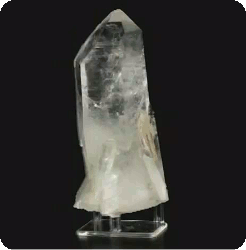
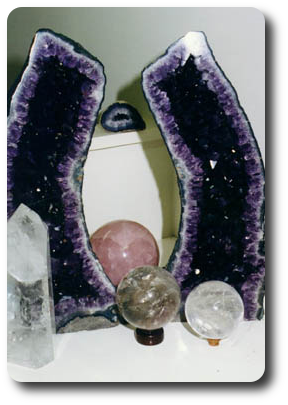
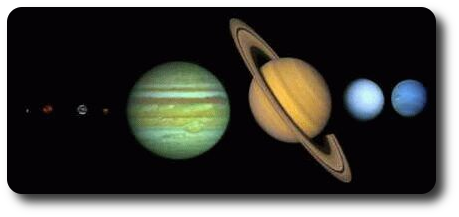
 AGATE--Acceptance, grounding, emotional, physical balance. Strengthens effects of other stones
AGATE--Acceptance, grounding, emotional, physical balance. Strengthens effects of other stones
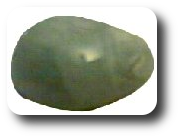 AMAZONITE--Soothing to nervous system. Aligns etheric and mental bodies.
AMAZONITE--Soothing to nervous system. Aligns etheric and mental bodies.
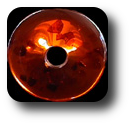 AMBER--Fossilized resin, not a stone. Lungs, memory, calming, protection.
AMBER--Fossilized resin, not a stone. Lungs, memory, calming, protection.
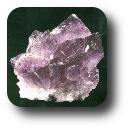 AMETHYST--Purple quartz. Assists spiritual/psychic opening in a grounded way, creativity, courage, intuition, self esteem.
AMETHYST--Purple quartz. Assists spiritual/psychic opening in a grounded way, creativity, courage, intuition, self esteem.
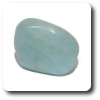 AQUAMARINE--Mental clarity, spiritual inspiration, calming, enhances self expression.
AQUAMARINE--Mental clarity, spiritual inspiration, calming, enhances self expression.
 ADVENTURINE--Green quartz. Mental clarity, joy, positive attitude
ADVENTURINE--Green quartz. Mental clarity, joy, positive attitude
 AZURITE--Activates expansion of consciousness, amplifies healing abilities
AZURITE--Activates expansion of consciousness, amplifies healing abilities
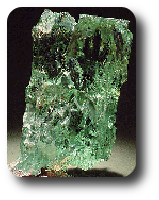 BERYL--Intestines, Cardiovascular system, sedative
BERYL--Intestines, Cardiovascular system, sedative
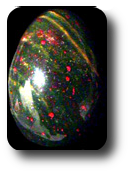 BLOODSTONE--Blood disorders, heart circulation, vitality, courage, generates higher states of consciousness.
BLOODSTONE--Blood disorders, heart circulation, vitality, courage, generates higher states of consciousness.
 BLUE QUARTZ--Detoxification, creativity, calming
BLUE QUARTZ--Detoxification, creativity, calming
 CALCITE--Kidney stimulant, aids in astral projection, balances yin/yang qualities
CALCITE--Kidney stimulant, aids in astral projection, balances yin/yang qualities
 CARNELIAN--Strengthening, creativity, prosperity, lower back problems, reproductive organs, encourage opening & curiosity.
CARNELIAN--Strengthening, creativity, prosperity, lower back problems, reproductive organs, encourage opening & curiosity.
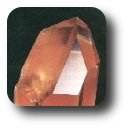 CITRINE--Breaks up energy blockages in the body, strengthens will, vision, balance, self-confidence, helps in letting go of addictions
CITRINE--Breaks up energy blockages in the body, strengthens will, vision, balance, self-confidence, helps in letting go of addictions
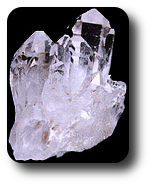 CLEAR QUARTZ--Powerful transmitter, amplifies/directs thought forms, healing energy balancer, promote clarity, attunes one to higher self
CLEAR QUARTZ--Powerful transmitter, amplifies/directs thought forms, healing energy balancer, promote clarity, attunes one to higher self
 DIAMOND--Removes blockages, negativity, brain balancer, draws toxicity from the body
DIAMOND--Removes blockages, negativity, brain balancer, draws toxicity from the body
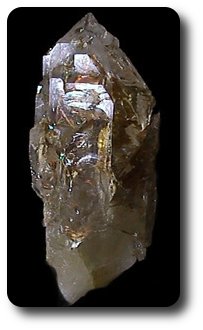 ELESTIALS--Crystal of the angels. Aligns one to the christ principles. Access past life information relevant to today. Releases blockages and negativity. One of the most powerful healing crystals. May be used on any part of body.
ELESTIALS--Crystal of the angels. Aligns one to the christ principles. Access past life information relevant to today. Releases blockages and negativity. One of the most powerful healing crystals. May be used on any part of body.
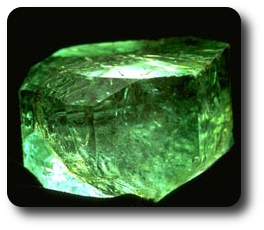 EMERALD--Improves relationships, meditation, relaxation, heart balancer, strengthens clairvoyance, psychic abilities, aids in mental illness
EMERALD--Improves relationships, meditation, relaxation, heart balancer, strengthens clairvoyance, psychic abilities, aids in mental illness
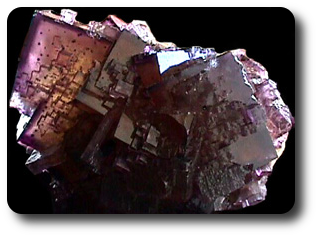 FLOURITE--Arthritis, strengthens abilities to perceive higher levels of reality, absorbs and clears air of psychic clutter
FLOURITE--Arthritis, strengthens abilities to perceive higher levels of reality, absorbs and clears air of psychic clutter
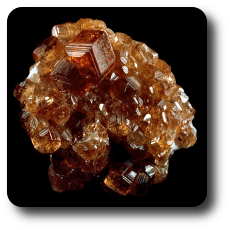 GARNET--Circulation (especially in lungs, skin, intestines), promotes heat, energy, vitality, strengthens imagination, self-esteem, willpower
GARNET--Circulation (especially in lungs, skin, intestines), promotes heat, energy, vitality, strengthens imagination, self-esteem, willpower
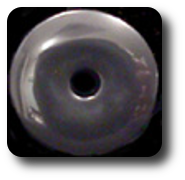 HEMATITE--Blood disorder, increases self esteem, aids astral protection
HEMATITE--Blood disorder, increases self esteem, aids astral protection
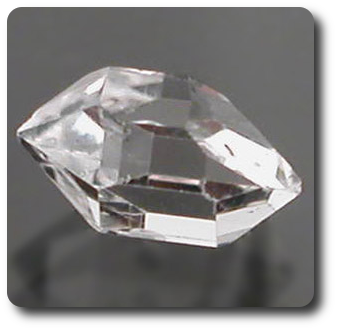 HERKIMER DIAMOND - Releases physical stress, tension, cleanses subtle bodies, discharges toxicity from system, aids in past life memories, stimulates clairvoyance and dream work, stores information.
HERKIMER DIAMOND - Releases physical stress, tension, cleanses subtle bodies, discharges toxicity from system, aids in past life memories, stimulates clairvoyance and dream work, stores information.
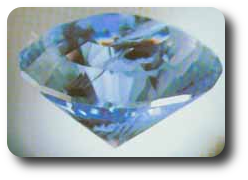 IOLITE--is one of the major stones used in healing, guided meditations and during astral travel adventures. It works through the third eye/crown area. The "correct" positioning of the stone needs to be intuited individually. The purpose for this stone is to enhance the evolution of spiritual growth as painlessly and effortlessly as possible. The electrical charge from the gem/crystal boosts the strength in aligning the auric field with the spiritual bodies. It balances the yin and yang of the male and female energy. It brings a balance to self enabling a greater sense of responsiblity in the management of relationships and money management. It releases disharmony allowing the movement towards perfection, not only in this world but also in the next world. It allows for patience as the acknowledger of access to inner knowledge, and in the knowing of direction.
IOLITE--is one of the major stones used in healing, guided meditations and during astral travel adventures. It works through the third eye/crown area. The "correct" positioning of the stone needs to be intuited individually. The purpose for this stone is to enhance the evolution of spiritual growth as painlessly and effortlessly as possible. The electrical charge from the gem/crystal boosts the strength in aligning the auric field with the spiritual bodies. It balances the yin and yang of the male and female energy. It brings a balance to self enabling a greater sense of responsiblity in the management of relationships and money management. It releases disharmony allowing the movement towards perfection, not only in this world but also in the next world. It allows for patience as the acknowledger of access to inner knowledge, and in the knowing of direction.
 JADE--Blood cleanser, strengthens immune system, kidneys, generates divine love, encourages altruistic nature & expression of feelings, strengthens earth connections, protects from injury and accidents.
JADE--Blood cleanser, strengthens immune system, kidneys, generates divine love, encourages altruistic nature & expression of feelings, strengthens earth connections, protects from injury and accidents.
 LAPIS LAZULI--Increases psychic abilities, opens clairvoyance, throat (expressiveness) cleansing, aligns etheric, mental, spiritual bodies, thought amplifier
LAPIS LAZULI--Increases psychic abilities, opens clairvoyance, throat (expressiveness) cleansing, aligns etheric, mental, spiritual bodies, thought amplifier
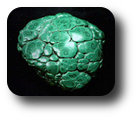 MALACHITE--Balance right/left brain, mental illness, overtoxification protects against radiation, promotes tissue regeneration, inspires giving of self, self expression, assists vision on all levels.
MALACHITE--Balance right/left brain, mental illness, overtoxification protects against radiation, promotes tissue regeneration, inspires giving of self, self expression, assists vision on all levels.
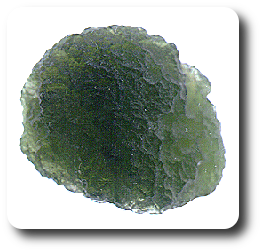 MOLDAVITE--The richly colored translucent green stone known as Moldavite is the only known gemstone of extraterrestrial origin.The only recorded fall of Moldavite occurred about fifteen million years ago! Moldavites are the rarest of gems, perhaps even rarer than diamonds, rubies or emeralds. Since their origin is not of this Earth, further discovery of new deposits seems highly unlikely. Many people find it easy to 'connect' with the energies of Moldavite. Typically, though not upon every occasion, people first experience heat radiating from the stone and a sense of pulling energy, with very strong and firm pulsations. Sometimes, when the connection is very strong, holding the stone will bring on a flush to the face and neck, accompanied by the activation of the heart chakra and sometimes the higher chakras, especially the third eye. Moldavite assists the expansion of your crystal and cosmic consciousness. All moldavite is made available to all those who would serve it in Truth. Moldavite, however, is not for everyone. Those of you reading these words - and who are immediately 'drawn' to the idea of working with this experiential stone - will intuitively realize that it is right for you to acquire one!
MOLDAVITE--The richly colored translucent green stone known as Moldavite is the only known gemstone of extraterrestrial origin.The only recorded fall of Moldavite occurred about fifteen million years ago! Moldavites are the rarest of gems, perhaps even rarer than diamonds, rubies or emeralds. Since their origin is not of this Earth, further discovery of new deposits seems highly unlikely. Many people find it easy to 'connect' with the energies of Moldavite. Typically, though not upon every occasion, people first experience heat radiating from the stone and a sense of pulling energy, with very strong and firm pulsations. Sometimes, when the connection is very strong, holding the stone will bring on a flush to the face and neck, accompanied by the activation of the heart chakra and sometimes the higher chakras, especially the third eye. Moldavite assists the expansion of your crystal and cosmic consciousness. All moldavite is made available to all those who would serve it in Truth. Moldavite, however, is not for everyone. Those of you reading these words - and who are immediately 'drawn' to the idea of working with this experiential stone - will intuitively realize that it is right for you to acquire one!
 MOONSTONE--Opens one to "feminine" qualities-receptivity, sensitivity, intuition, clairvoyance, for female problems & emotional balance
MOONSTONE--Opens one to "feminine" qualities-receptivity, sensitivity, intuition, clairvoyance, for female problems & emotional balance
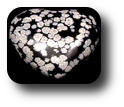 OBSIDIAN--protects sensitive people, wards off negativity, reduces tensions, good for letting go of old love, travel, strengthens prophesy
OBSIDIAN--protects sensitive people, wards off negativity, reduces tensions, good for letting go of old love, travel, strengthens prophesy
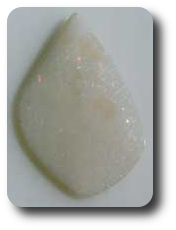 OPAL--Protection, enhances cosmic consciousness, intuition, harmony, emotional balance, joy, creativity
OPAL--Protection, enhances cosmic consciousness, intuition, harmony, emotional balance, joy, creativity
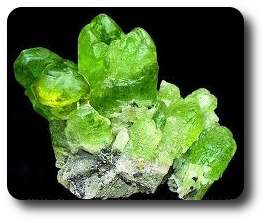 PERIDOT--Stimulates tissue regeneration, enhances clarity, patience, calming, balancing, aligns all subtle bodies, increases clairvoyance, encourages positive emotional outlook
PERIDOT--Stimulates tissue regeneration, enhances clarity, patience, calming, balancing, aligns all subtle bodies, increases clairvoyance, encourages positive emotional outlook
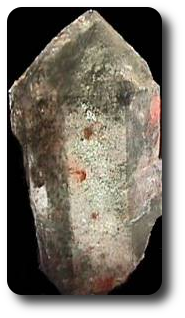 PHANTOM QUARTZ--the crystal to meditate on when you feel you have become stuck in life and need to get going again.
PHANTOM QUARTZ--the crystal to meditate on when you feel you have become stuck in life and need to get going again.
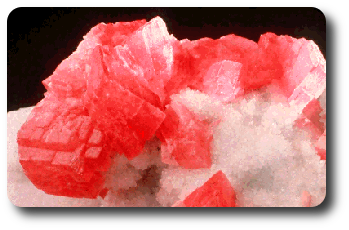 PYRITE--Digestive aid, good for red corpuscles, circulation, eases anxiety, frustration depression, money magnet
PYRITE--Digestive aid, good for red corpuscles, circulation, eases anxiety, frustration depression, money magnet
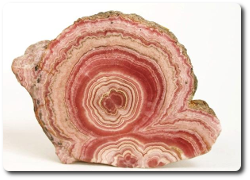 RHODOCHROSITE--Cleanses subsciousness, strengthens self-identity, attunes one to natural androgynous state
RHODOCHROSITE--Cleanses subsciousness, strengthens self-identity, attunes one to natural androgynous state
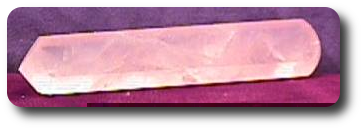 ROSE QUARTZ--Increases confidence, personal expression, creativity, emotional balance, self-love, for "heartbreak" , opening to Universal love and comfort
ROSE QUARTZ--Increases confidence, personal expression, creativity, emotional balance, self-love, for "heartbreak" , opening to Universal love and comfort
 RUBY--Heart, spiritual balance, confidence, flexibility, energy, vitality, devotion, leadership
RUBY--Heart, spiritual balance, confidence, flexibility, energy, vitality, devotion, leadership
 RUBILATED QUARTZ--Helps break old patterns, childhood blockages, tissue regeneration, builds immune system, eases depression
RUBILATED QUARTZ--Helps break old patterns, childhood blockages, tissue regeneration, builds immune system, eases depression
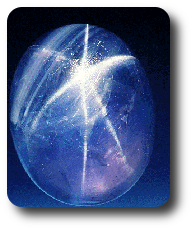 SAPPHIRE--Enhances glandular function, elevates mood, stimulates clairvoyance, telepathy, "feminine" qualities, improves expression, communication with one's spirit guides.
SAPPHIRE--Enhances glandular function, elevates mood, stimulates clairvoyance, telepathy, "feminine" qualities, improves expression, communication with one's spirit guides.
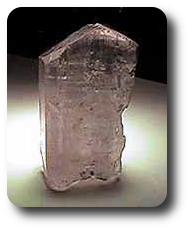 SMOKY QUARTZ--Increases fertility, creativity, joy, balances emotional energy, grounding, strengthens adrenal glands, aids protein assimilation
SMOKY QUARTZ--Increases fertility, creativity, joy, balances emotional energy, grounding, strengthens adrenal glands, aids protein assimilation
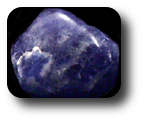 SODALITE--Encourages harmony, balance, courage, communication, strengthens lymphatic system, alleviates subconscious fear and guilt
SODALITE--Encourages harmony, balance, courage, communication, strengthens lymphatic system, alleviates subconscious fear and guilt
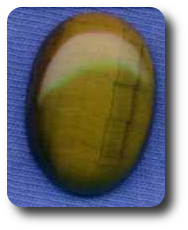 TIGER EYE--For beginning detoxification, works on mass consciousness to separate desire from need.
TIGER EYE--For beginning detoxification, works on mass consciousness to separate desire from need.
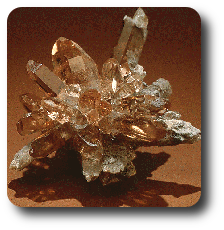 TOPAZ--Assists understanding, balances, emotions, helps in letting go of the past, enhances creativity, relaxant, aids tissue regeneration.
TOPAZ--Assists understanding, balances, emotions, helps in letting go of the past, enhances creativity, relaxant, aids tissue regeneration.
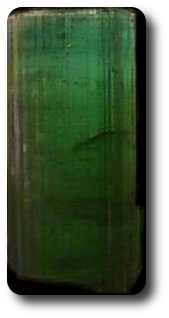 TOURMALINE--Dispels fear, negativity, grief, promotes health, environment, tranquil sleep, balance in relationships, self-expressions, eases compulsiveness. Tourmaline is %el ectromagneticlitherefore it interacts with our bodies electromagnetic system. It has a strong anti cancer vibration and is good for the heart chakra. It is known as a master healer BLACK. Activates base chakra, for arthritis, adrenals, protects against negativity
TOURMALINE--Dispels fear, negativity, grief, promotes health, environment, tranquil sleep, balance in relationships, self-expressions, eases compulsiveness. Tourmaline is %el ectromagneticlitherefore it interacts with our bodies electromagnetic system. It has a strong anti cancer vibration and is good for the heart chakra. It is known as a master healer BLACK. Activates base chakra, for arthritis, adrenals, protects against negativity
 PINK/RUBELLITE--Heart balancer, increases insight, perception, creativity, fertility, balances passivity/aggression
PINK/RUBELLITE--Heart balancer, increases insight, perception, creativity, fertility, balances passivity/aggression